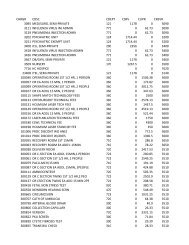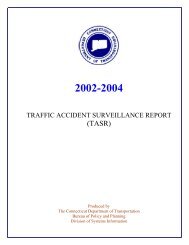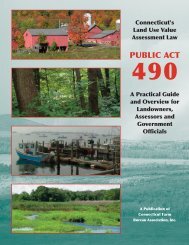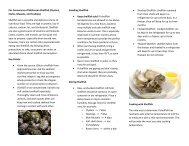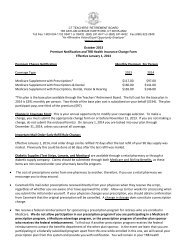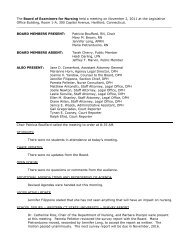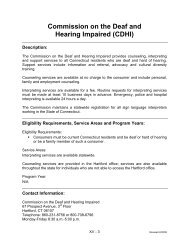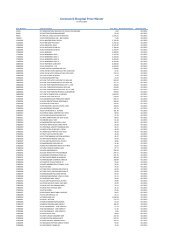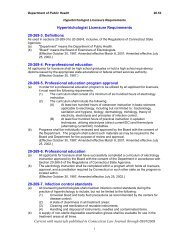Guidelines for Investigator's Boating Accident Report - CT.gov
Guidelines for Investigator's Boating Accident Report - CT.gov
Guidelines for Investigator's Boating Accident Report - CT.gov
You also want an ePaper? Increase the reach of your titles
YUMPU automatically turns print PDFs into web optimized ePapers that Google loves.
Sound Producing Equipment Failure—Horn or bell not functional<br />
Nav. Equip. Failure – GPS, Radar<br />
Visual Distress Signal Failure - Visual distress signals failed Includes any of the following<br />
used during the day: Day Flags, Shapes, and Smoke Includes any of the following used at<br />
night: SOS Light, flares and other pyrotechnics<br />
Excessive Speed: Speed above that which a reasonable and prudent person would have operated<br />
under the circumstances that existed. It is not necessarily a speed in excess of a posted limit.<br />
Failure to Yield: Failure of stand-on vessel to avoid collision with another vessel in a Rules of Road<br />
Violation. May include a violation of the state-regulated distance or proximity requirements.<br />
Operator knowingly fails to take action.<br />
Failure to Vent: Prior to starting the engine, failure to take action to ventilate a machinery space or<br />
enclosed compartment such that gasoline vapors are not expelled.<br />
Hazardous Waters: Water conditions that were not weather-related, but were inherent to the<br />
location, such as currents, rapids, or rapid tidal flows, contributed to the accident.<br />
Ignition of Fuel/Vapors: <strong>Accident</strong>al combustion of vessel fuel or fuel vapors, regardless of the<br />
cause of the spill.<br />
Improper Anchoring: Where a vessel was either in the process of being anchored incorrectly or<br />
incorrectly held in place in the water by an anchor. Improper anchoring includes dropping the<br />
anchor off of the stern of the vessel instead of the bow or a vessel that is improperly moored to a<br />
buoy or anchored vessel.<br />
Improper Lookout: Not keeping a proper watch and not scanning effectively <strong>for</strong> other vessels,<br />
persons, or objects. The operator failed to perceive danger and the risk of a collision or grounding,<br />
using all available resources, because no one was serving as lookout or the person so serving failed<br />
in that regard.<br />
Improper Lookout includes the following Distractions:<br />
• Looked but did not see – Observed, but did not detect the relevant vessel, person, or<br />
object.<br />
• Lost in thought – Was thinking about items other than the task; daydreaming.<br />
• Background lighting – Lights on docks, shorelines, or other vessels.<br />
• Onboard lighting – Glare from lights onboard the vessel; includes improperly shielded<br />
navigation lights.<br />
• Occupant(s) – Occupant(s) in vessel; includes conversing with or looking at other<br />
occupant(s).<br />
• Moving object(s) in vessel – Moving object(s), other than occupant(s), in vessel.<br />
11




